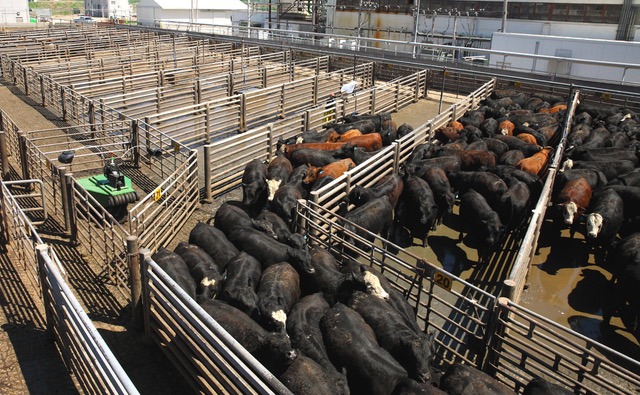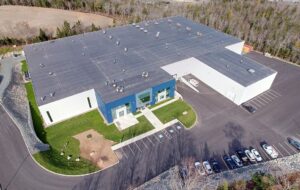Futurists and tech junkies have long fantasized about a future where robots are an integrated part of our world, performing many of the jobs and functions that we humans currently undertake. As agriculture continues to shine in the technology spotlight, some companies are starting to consider the ways that robots could make our food system work better. Drones are a hot commodity when it comes to crop scouting and pesticide spraying, while weed-eradicating robots and fruit-harvesting robots are fine-tuning their future place on the farm. Even major food producers like Driscoll’s are keeping a close eye on robotics in agriculture and actively engaging with startups in the space.
By all accounts, it seems that farmers are receptive to turning over certain tasks to digital counterparts while investors see a clear value proposition and viability for farmbots. After all, who would eschew the option to send a robot out to take care of the mundane daily chores around the farm, especially during nasty weather or when other aspects of the business like harvest require the farmer’s full attention?
Now, Cargill is bringing robots to its meat processing facilities in the hope of improving animal welfare, worker safety, and efficiency with a robotic cattle herder. The three-wheeled herding robot weighs 450-pounds, features wiry waving arms, and an MP3 player all encased in a sturdy metal exterior.
Worker Safety
Tested at the international ag powerhouse’s beef processing plants in Schuyler, Nebraska, and Wyalusing, Pennsylvania, the concept for the robot was born out of a desire to enhance worker safety.
“If one of the animals wants to hurt the robot, fine. I won’t lose sleep over the robot getting hurt or having to buy a brand new one,” Brad Churchill, director of beef slaughter operations at Cargill, told AgFunderNews. “But the thought of an employee not going home to his or her family? That’s what I lose sleep about.”
Beef cattle routinely weigh 1,500-pounds or more and when an abattoir processes upwards of 5,000 head a day like the Schuyler plant, the safety risks can be quite high. Add in the fact that for some cattle the processing plant is a new environment with unfamiliar sights, smells, and sounds, and the risks get even higher.
Traditionally, workers at processing plants don lacrosse helmets and chest pads to protect their vital parts from a potential head-butting or bone-crushing kick, but these measures may not be enough to escape an upset steer or agitated group of cattle unscathed. They use flags attached to long polls or paddles that make rattling noises to drive the animals in the intended direction, which allows them to keep a safer distance from the herd.
“Last year, a young man was hit by a 1,600-pound Angus steer and it was completely unprovoked. He never rattle-paddled the animal or any of the animals in the group. But the steer happened to look around the backside of a gate and he was on the worker within seconds. He managed to escape down a narrow hatch designed for people to get out of the way, but he suffered two fractured ribs and a dislocated shoulder. It was completely unprovoked,” Churchill recounts.
Folks unfamiliar with livestock may presume that cattle only become aggressive when agitated, but that’s not always the case. Like any animal, it’s impossible to read a dairy cow’s mind or to predict what a steer may do when sauntering down an alleyway. And while some believe that processing plants put a low priority on handling animals with care, most slaughterhouses have adopted strict rules and criteria regarding how employees can interact with animals. The federal Human Methods of Slaughter Act also includes clear requirements regarding the safe and respectful handling of livestock at slaughter.
Robot Design
For Churchill, the robot was an obvious answer to improving worker safety. After a few design iterations including a modification from a six-wheeled model to a three-wheeled, beefed up version with a sturdy metal casing, Churchill and the design team landed on the right mix of components.
“What we tried to do is to replicate a human on the ground in every way possible. A human can talk and move his or her arms, so we replicated that. The robot is equipped with an MP3 player that talks to the cattle and it has flags attached to polls that wave back and forth just like the flags that we use to get livestock to move,” he explains.
Gauging the animals’ reaction was high on everyone’s list as well as determining whether workers could be trained effectively on operating the device safely and responsibly. For the most part, the cattle responded to the robot the same way that they respond to humans in the working pens, Churchill says. So far, they haven’t bolted away from the robot or seemed spooked by its presence.
The success of the robot has less to do with its design, however, and more to do with its ability to become an extension of an experienced cattle handler’s acumen. While many robotics innovations in agriculture are focused on replacing workers, Cargill’s herding robot is designed to act like another member of the crew.
“No one is allowed to operate it who doesn’t already know how to move cattle. They will have to pass our animal welfare training before they are ever allowed on the controls to move animals with the robot. It was never intended or designed to eliminate people in the yards,” says Churchill. “An experienced cattle handler knows that you can’t just drive the robot at the animals full speed. To introduce the robot, we drove it into the corner of a pen with a group of animals and just let them interact with it freely. Some of them smelled it and a few licked it, but most reacted the same way they would to a human: they started walking the other way.”
The robotic cattle drivers are currently being implemented at Cargill beef plants in the US and Canada. New Jersey-based Flock Free, which develops bird control products for the agriculture industry, handles the device manufacturing. Farmers and livestock industry personnel can pick up their own herding robot from Flock Free for a price of roughly $50,000 depending on which bells and whistles they choose.
Cargill and Flock Free aren’t the first to consider a cattle herding robot. In 2016, Australian startup Swagbot debuted its cattle-herding robot that is capable of traversing rugged terrain on Australia’s vast cattle and sheep stations that can be difficult to access. The startup was reportedly working on a way to teach the robot to identify animals that are injured or sick. And in 2013 a team of researchers at Sydney university unveiled a robot called Rover that was used to herd cows from the field to their dairy stancheons.
The Animal Handling and Welfare Angle
Say the name Temple Grandin to anyone in the beef industry and chances are their faces will light up with immediate recognition. The famous author and animal scientist who is now stationed at Colorado State University revolutionized the way that beef producers handle cattle, including everything from the way we interact directly with the animals and the way that handling facilities and slaughterhouses are designed.
By her account, cattle producers were all too fond of taking an unnecessarily aggressive approach to moving animals from one location to another, routinely using so-called hot shots or electric cattle prods and other means to drive livestock. Today, the vast majority of major meat processing plants have adopted her handling and welfare standards.
Cargill called on Dr. Grandin to evaluate the robot and its intended use during the R&D phase.
“The robotic cattle driver developed by Cargill is a major innovation in the handling and welfare of farm animals,” said Dr. Grandin in a press release from Cargill announcing the innovation. “This device will lead to huge strides in employee safety while moving large animals and reduce the stress on cattle across the country.”
Keeping animals calm and unnecessary stress to a minimum are some of the primary tenants behind Grandin’s teachings and for good reason. If an animal is subjected to stress before slaughter, it can have a detrimental impact on the meat making it unsellable in some instances. Beyond this economic incentive, however, Grandin routinely espouses the importance of treating animals with respect throughout their lifetimes, which includes handling them in a low-stress manner.
“For dairy cows and cull animals who move somewhat slow, we attached a blower with streamers on the front that can be switched on and used to gently tickle the backside of the animal’s legs. Our intention is to never touch the animal with the robot. The waving flags and MP3 voice recording can be switched off, as well, if the animals are already moving in the right direction.”
Is the Future of Livestock Herding Robotic?
It’s hard for Churchill to envision a scenario where the herding robots operate autonomously. Animals think just like humans and make decisions just like we do, he explains. He also wouldn’t want to put his plant at risk of facing regulatory repercussions if the robot caused some sort of injury or harm to an animal while operating autonomously. To process meat for retail sale in the US, plants are required to obtain a grant of inspection from the USDA and to only perform certain stages of processing when a USDA inspector is on site and observing operations. The inspector has the power to shut down operations if something isn’t happening correctly, including animal welfare and handling violations.
Autonomous possibilities aside, he and the team have already conjured up countless applications for the device beyond beef cattle operations. In fact, he’s hoping that the device doesn’t get pigeonholed as strictly cattle-oriented.
“When we built this, we kept in mind whether it could be used in pork production in hog houses or pork processing plants,” he explains. “In turkey houses, the large tom turkeys can be quite aggressive. What if someone could drive one of these robots through the center of the tom house and use the cameras to make observations about what’s happening from an iPad? The robot was built to be versatile. We’re going to get them running across our beef operations and then see where else they fit.”
Curious to see the robotic herder in action? Click here.




